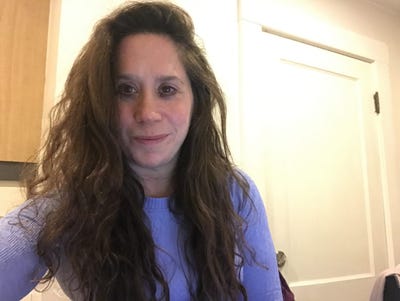Why Partners Must Grasp Verticals to Successfully Sell IoTWhy Partners Must Grasp Verticals to Successfully Sell IoT
Understanding industry dynamics is the name of the game.

If cloud computing was a wave that partners rode – or failed to ride – the internet of things is a tsunami, experts say.
IT channel partners have two choices: They can try to gain control of this tidal trend as it washes over enterprises, or they can be utterly subsumed by it. Simply put, IoT technology brings this mantra: Change or die.
According to data, IoT technology is poised to have major impact on enterprises over the next decade. Analyst firm Gartner says there will be 20 billion IoT-connected things by 2020 — and that’s not just phones and tablets but also dedicated-function objects, such as jet engines, vending machines, and oil pump sensors. And the size of the IoT market is projected to be $1.6 trillion by 2025, according to Statista.

Optimized Channel’s Michelle Ruyle
“While cloud has been the most popular person in the room, IoT will rule the world,” predicts Michelle Ruyle, CEO of Optimized Channel.
And if cloud computing has been the prevailing architecture over the past decade, edge computing may be more important for connected things, because of low-latency, high-volume data needs.
“The edge is going to eat the cloud,” says Jo Peterson, vice president of cloud and security services for Clarify360.
Join Ruyle, Peterson and 100+ industry-leading speakers, more than 6,400 partners and 300+ key vendors, distributors and master agents at the Channel Partners Conference & Expo, March 9-12. Register now! |
Channel Partners sat down with Ruyle and Peterson in advance of their panel session, “IoT: The Promise, the Pitfalls and How Partners Can Help,” March 10, at the Channel Partners Conference & Expo in Las Vegas, to learn how channel partners can successfully sell IoT technology and take advantage of this next technology wave.
Channel Partners: Is IoT just the next wave of technology or is it fundamentally different from the previous chapter of transformation that introduced cloud computing?

Clarify360’s Jo Peterson
Jo Peterson: Cloud is a foundational vehicle for IoT. But IoT is different just in terms of the number of devices that can be connected. We may think about it as just tablet and phones. But everything can be a device. In the health care industry, you’re talking about all kinds of things that can be connected and that we haven’t thought of before. In some circles, analysts have said the edge is going to eat the cloud, and the cloud will be more of a back-end processing unit.
Michelle Ruyle: And that has a lot to do with the [silicon] chips that will go in these connected things. Today the chips are less sophisticated. But going forward, they will become more mature and able to do analytics at the edge.
CP: What are the opportunities to successfully sell IoT in the channel?
MR: First, we should look at the different kinds of partners we’re talking about. It’s VARs [value-added resellers], it’s MSPs [managed service providers], it’s agents who are all looking at IoT and wondering how they can participate.
What’s interesting about the opportunity to successfully sell IoT is that the internet of things has a broad ecosystem of solutions: It has hardware, software, connectivity and orchestration activities. IoT spans this entire business process versus being a standalone IT project.
Agents, for example, are used to selling IT projects and they don’t necessarily have the hardware or software perspective. The connectivity is something they are more familiar with. I think that one of the things holding back IoT is that different partner types have to understand all these pieces figure out how they can play a role. If they are a VAR, how can they …
… augment hardware with the services side and how can service agents augment the hardware and software pieces with connectivity.
As an industry, that’s our next evolution — bringing all this together no matter the partner type. And IoT could be the technology that does that.
CP: Is it inherently a partnership-type opportunity where different partners need to sell together?
MR: That’s where you are going to see this convergence of the different partner types; this is something we have been talking about for years. How we bring the VAR, MSP and agent together. Because IoT touches all these ecosystems, it’s the impetus to bring these three partner sets together to support each other.
JP: We’ll see something else happen too. You’re seeing large vendors make their own solutions whole. When these vendors get in front of the channel, they have a fully baked product to provide to the client.
One of our co-panelists at the Channel Partners Conference & Expo has had great success working with one of these large vendors. He is using the vendor’s brand and all its technology and support to make the customer more at ease. Customers want to have a sense of security that the provider will around [to solve problems that arise].
CP: Do partners run the risk of being sidelined by the large vendors?
JP: It will evolve. They make a choice to keep creating value. Value has a lot of different faces; they specialize in a vertical or whatever the case. It’s up to them to reinvent themselves.
MR: We have seen this time and time again. Many years ago, the emerging technology was the internet, then MPLS [multiprotocol label switching] and VoIP; then it was infrastructure as a service, platform as a service and software as a service. Agents reinvented themselves to be relevant when they were previously just selling phone services. Reinvention is a way of survival.
CP: What are some of the challenges for channel partners in successfully selling IoT technologies?
MR: Partners are not clear on how to talk to customers about IoT initiatives. It should be approached by market segment: Industrial, healthcare, automotive — these industries see business value in using IoT to manage cost, gain operational efficiency and maybe even for regulatory reasons. The challenge is a broad ecosystem. It spans their end customers’ entire business process. They are used to selling based on a standalone IT project. They will be more comfortable selling IoT once they understand the vertical markets using it.
JP: IoT buying today is pretty decentralized, for the most part. IoT isn’t bought by IT. It’s bought by different stakeholders that have different reasons for buying it. Partners need to understand some of the regulatory situations that are occurring that might force an action on the part of a company.
In telehealth, for example, the person buying is the CFO or CEO or somebody with the purse strings. In that industry, the government fines providers for having too many readmitted to the hospital. Channel providers need to understand the regulatory drivers for that vertical. Another driver for medical is [Internet security law, Senate bill 327] that passed in California in January requiring devices to be secure. Think about …
… who in my customer base has those kinds of devices. It’s a way to open the conversation.
You have to be a bit clever in your approach. Going to IT to sell IoT isn’t necessarily a way to grow this portion of your business. Like cloud, lines of business are going around IT (sometimes called “shadow IT”). We will see that behavior, because there isn’t a standard approach to procuring IoT today.
MR: Another group that will be central is the [chief information security officer]. And security is holding back IoT initiatives from being deployed.
CP: What are the takeaways you would recommend for IT channel sellers?
JP: First, pick a vertical. Second, become familiar with the providers that are offering services in that vertical and what they can offer as far as fully baked solutions.
MR: IoT is the future, so educating yourself is paramount. Even better, become certified.
Next, partners need to understand the vertical markets that are embracing IoT today, and they need to look at their customers in those verticals. They should also identify suppliers that have IoT use cases based on the verticals in their customer base.
JP: Also, look at your existing customer base of “friendlies” — they are a great source to learn from. It’s a whole separate language, so try out your ideas with someone you know and trust.
Read more about:
AgentsAbout the Author
You May Also Like


